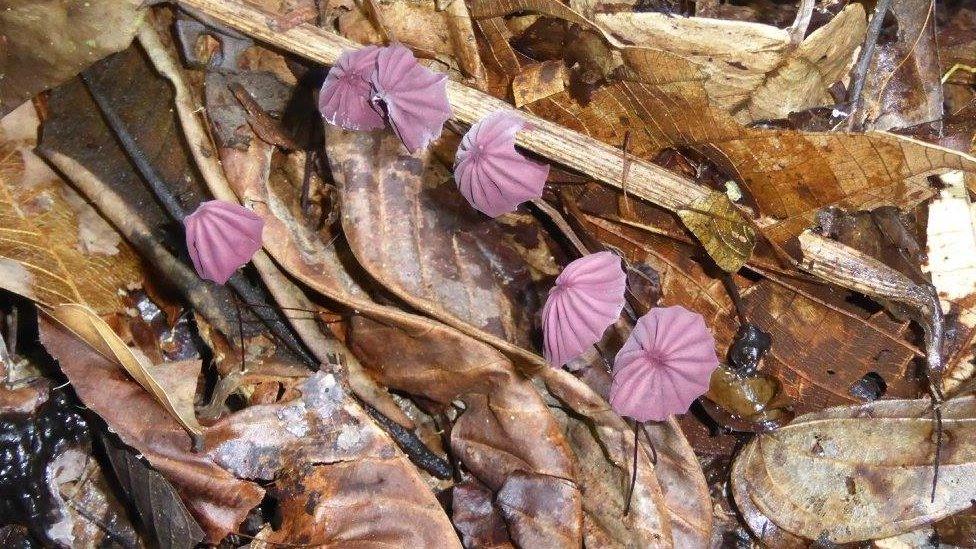How one teaspoon of Amazon soil teems with fungal life
- Published

Fungi on the floor of the rainforest
A teaspoon of soil from the Amazon contains as many as 1,800 microscopic life forms, of which 400 are fungi.
Largely invisible and hidden underground, the "dark matter" of life on Earth has "amazing properties", which we're just starting to explore, say scientists.
The vast majority of the estimated 3.8 million fungi in the world have yet to be formally classified.
Yet, fungi are surprisingly abundant in soil from Brazil's Amazon rainforest.
To help protect the Amazon rainforest, which is being lost at an ever-faster rate, it is essential to understand the role of fungi, said a team of researchers led by Prof Alexandre Antonelli, director of science at the Royal Botanic Gardens, Kew.
"Take a teaspoon of soil and you will find hundreds or thousands of species," he said. "Fungi are the next frontier of biodiversity science."
The Amazon harbours untold natural resources
Fungi are usually neglected in inventories of biodiversity, being inconspicuous and largely hidden underground.
Fewer than 100 types of fungi have been evaluated for the IUCN Red List, compared with more than 25,000 plants and 68,000 animals.
Fungi in soil from tropical countries are particularly poorly understood. To find out about soil from the Amazon rainforest in Brazil, researchers collected samples of soil and leaf litter from four regions.
Genetic analysis revealed hundreds of different fungi, including lichen, fungi living on the roots of plants, and fungal pathogens, most of which are unknown or extremely rare. Most species have yet to be named and investigated.
Areas of naturally open grasslands, known as campinas, were found to be the richest habitat for fungi overall, where they may help the poorer soil take up nutrients.
Understanding soil diversity is critical in conservation actions to preserve the world's most diverse forest in a changing world, said Dr Camila Ritter of the University of Duisburg-Essen in Germany.
"For this, we need to put below-ground biodiversity on the agenda for future conservation action plans," she said.
Fungi are often subterranean, but sometimes visible on the surface as mushrooms or truffles
Fungi are essential for recycling nutrients and regulating carbon dioxide levels, as well as being a source of food and medicines.
Yet, some species have a darker side; devastating trees, crops and other plants across the world, and wiping out animals such as amphibians.
The , by teams in the UK, Brazil, Germany, Sweden and Estonia, is published in the journal, Ecology and Evolution.
Follow Helen .